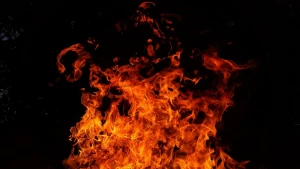
Breakthrough in Ukraine’s offensive remains possible, but it will take time – The Economist
Ukraine's counteroffensive has reached its eighth week, achieving more territorial gains than Russia's previous winter offensive. However, progress has been slower and tougher than expected, leading to a protracted battle likely to continue into autumn
The Economist writes about it.
In early June, Ukraine launched major attacks in the south, but the advance faced immediate challenges. Equipped with Western gear, Ukrainian brigades encountered minefields and came under heavy fire from Russian artillery, anti-tank missiles, attack helicopters, and loitering munitions.
The offensive has turned into a grinding slog, and there are several reasons for it
First, Ukraine's task is daunting, facing well-fortified Russian defenses up to 30 km deep with mines, tank traps, and earthworks. Moreover, Russia's mobile and rapid counter-attacks have disrupted Ukrainian advances. The lack of advanced equipment like demining kits and air-defense systems, coupled with the absence of substantial air support, hampers Ukraine's ability to breach Russian lines effectively.
The other reason is that Ukraine's new brigades, hastily assembled with unfamiliar equipment, lack the proficiency to coordinate complex attacks involving various weapon systems. Their limited training and disorientation at night have added to the challenges.
Despite the slow progress, Ukraine's partners are not worried yet, and there are three optimistic factors
The first one is that there is no need to fear a serious Russian counter-attack, despite minor Russian gains in the northern Luhansk region in recent days. Russia has lost its momentum, and “that may be one reason why Russia has torn up a grain deal and resumed strikes on Ukraine’s ports and grain stores,” the article notes.
Secondly, Russia's forward defense strategy leaves them with little mobile reserve in the rear, potentially benefiting Ukraine if it finds alternative routes.
And finally, Ukraine is chipping away at Russia's combat power by targeting command posts and striking air bases and ammunition depots. However, it remains uncertain if these attacks are significantly weakening Russia's forces.
“It is far from a failure, in my view,” said US General Mark Milley, when asked whether the offensive had stalled. “I think that it’s way too early to make that kind of call.”
Ben Wallace, Britain’s defense minister, said that Ukraine’s progress was “not catastrophically behind schedule,” adding that in some places Ukraine’s army was less than 300 meters away from Russia’s main line of defense, with Russian-held towns increasingly coming within range of Ukrainian HIMARS rocket launchers.
The article notes that the war has now shifted to a war of attrition, with both sides facing relative rates of loss and the coherence of their armies being crucial factors. Ukraine's army, highly motivated and equipped with Western support, is expected to maintain the offensive beyond the summer. Russia's army, comfortable on the defense, is “certainly bleeding” and could potentially “disintegrate” over time.
Ukrainian commanders have adopted a more patient and cautious approach, which is considered a mistake by the US and EU military officials. But Ukrainian commanders avoid gambling their army as NATO generals have never faced similar circumstances. This cautious strategy seeks to wear down Russia's army using long-range precision weapons and Western intelligence advantages, rather than sending the Ukrainian new citizen army into a meat-grinder in the way that Russia did in Bakhmut.
“This is going to be long, it’s going to be hard, it’s going to be bloody. And at the end of the day, we’ll see where the Ukrainians end up,” concluded General Milley.
- News















































